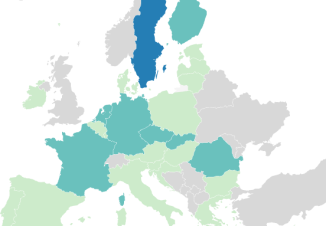

Across the countries responding, the most common model in place is a straightforward divide between those who are regarded as ‘employees’ and those who are ‘self-employed’. Moreover, there is a significant degree of commonality in the way in which different countries define employment. The central idea that an employee is someone who agrees to work under the direction and control of another is almost universally recognised – though different countries may emphasise different aspects of the relationship in distinguishing between employees and independent contractors.
Many countries focus in particular on the idea of subordination in determining whether or not an individual is an employee – that is, the performance of work under the authority of an employer who has the power to issue orders and directives, to supervise their execution and to exert discipline over the subordinate. Subordination is the key distinction between a salaried employee and an independent contractor in France, Cyprus, Mexico and Panama, among others.
In many ways, subordination is part and parcel of the control that is almost universally regarded as crucial in establishing an employment relationship. Greece and Romania, for example, both place emphasis on the extentto which the employer exercises control over how when and where the individual performs work and the requirement for him or her to comply with the employer’s instructions. Unusually, Greece also distinguishes between hourly paid and salaried employees when it comes to the minimum notice that must be given on termination of employment.
An interesting factor identified recently by the California Supreme Court is whether the contractor is performing work that is generally outside the usual course of the hiring entity’s business. The case in question was brought by package delivery drivers working for a package delivery company (Dynamex) and the Court’s conclusion that they were employees is regarded as having potentially wide ramifications for businesses in California. This is particularly so as the Court also ruled that contractors should be assumed to be employees unless the employer can demonstrate otherwise.
Most of the countries responding to the research emphasised that whatever the contract may say on paper, the courts or other authorities will look carefully at the reality of the relationship in order to determine its true status. Normally, the consequence will simply be that the workers will then be in a position to claim their rights as employees. In the Czech Republic, however, the misclassification of a worker brings significant sanctions with it. An organisation engaging a worker as an independent contractor when he or she should in reality have been engaged as an employee can be fined up to CZK 10,000,000 (approx EUR 400,000).
This contrasts with the position in Latvia where the courts have taken the view that the most important factor is the existence of a will of the parties to enter in a specific type of relationship. If parties have clearly and intentionally chosen a ‘gig’ type of relationship, then employment law protections are not applicable. Bulgaria operates at the other end of the scale, with its Labour Code expressly stipulating that all relations between parties in connection with the provision of the individual’s labour are to be regulated solely as employment relationships.
Such a clear-cut approach is unusual. It is far more common for various factors to be weighed up by the courts, with the label attached to the contract by the parties being just one factor taken into account in an overall analysis.
In Turkey, the label that the parties choose to attach to the contract can be overridden if the level of dependence is such that in reality the relationship is one of employment. Slovenia emphasises the extent to which the contractor is integrated with the employer’s business – a factor also recognised as important in China.
China indeed provides a neat example of how universal the test of employment status is. According to press reports, the ‘Good Chef’ app allowed customers to book chefs to come to their home to cook a meal. The chefs operated under strict rules set by the app operator which also provided work clothes, training, and paid the chefs a fixed monthly fee for their service. The court held that, although the cooperation agreement specified that both parties did not have employment relationship, in reality the relationship was one of employer and employee. As a result, the chefs were entitled to severance payments when their employment came to an end.
A similar result would almost certainly have been arrived at in most of the countries responding to our research.
Malta takes an interesting approach to defining employees. In common with most countries it has a multi-factorial test, but this is applied in an unusually rigid way. Ostensibly self-employed persons will be deemed to be employees if at least five of the following criteria are satisfied:
For more on the gig economy, read the latest research across 40 jurisdictions globally: The Rise of the Gig Economy.


